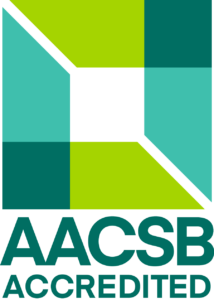Applied Experimental Economics
- Credits: 8
- Ending: Examination
- Range: 30sP
- Semester: winter
- Year: 1
- Faculty of Economics and Finance
Teachers
Included in study programs
Teaching results
Understanding
Distinguishing between causality and correlation, understanding the limits of experimental methods
Competence
Critical thinking, identification of alternative explanations of a particular economic phenomenon and the ability to eliminate (verify) them, ability to ask a research question and answer it
Skills
Designing a laboratory and field experiment to answer a research question, ability to test theoretical hypotheses, application of experimental methods within an organization or industry to find out what works and what does not, ability to write a scientific article utilizing experimental methods.
Indicative content:
• Methodology of science – advanced
• Experiments vs theory
• Replicability
• (Non)generalizability of experimental results
• How to write experimental papers
• Market institutions -- advanced
• Market design and market performance
• Asset bubbles
Indicative content
• Methodology of science – advanced
• Experiments vs theory
• Replicability
• (Non)generalizability of experimental results
• How to write experimental papers
• Market institutions -- advanced
• Market design and market performance
• Asset bubbles
Support literature
Experimental Methods – A Primer for Economists by Daniel Friedman and Shyam Sunder, Cambridge University Press 2004
V. Smith, “Markets as Economizers of Information: Experimental Examination of the Hayek Hypothesis,” Economic Inquiry, vol. 20, April 1982, pp. 165-179.
V. Smith, “An Empirical Study of Decentralized Institutions of Monopoly Restraint,” pp. 83-106 in G. Horwich and J. Quirk (eds.), Essays in Contemporary Fields of Economics. West Lafayette: Purdue University Press, 1981.
V. Smith, “Theory, Experiment, and Economics,” Journal of Economic Perspectives, vol. 3, Winter 1989, pp. 151-169.
V. Smith, “Economics in the Laboratory,” Journal of Economic Perspectives, vol. 8, Winter 1994, pp. 113-131.
J. Cox, “On Testing the Utility Hypothesis,” Economic Journal, vol. 107, July 1997, pp. 1054-1078.
J. Cox, B. Roberson, and V. Smith, “Theory and Behavior of Single Object Auctions,” pp. 1- 43 in V. Smith (ed.), Research in Experimental Economics, vol. 2. Greenwich: JAI Press, 1982.
D. Lucking-Reiley, “Using Field Experiments to test Equivalence Between Auction Formats: Magic on the Internet,” American Economic Review, vol. 89, 1999, pp. 1063-1079.
R. Forsythe, T. Palfrey, and C. Plott, “Asset Valuation in an Experimental Market,” Econometrica, vol. 50, May 1982, pp. 537-567.
Collins, S.M., James, D., Servátka, M., Woods, D., 2017. Price-setting and attainment of equilibrium: posted offers versus an administered price. Games Econ. Behavior
Requirements to complete the course
Full time
20% class exercise: specifying a research question
40% class project: The primary focus of the course is on applying experimental methods, which can only be done through a project (rather than an exam), hence the 40% weight on the project.
40% written exam
Part time
20% class exercise: specifying a research question
40% class project: The primary focus of the course is on applying experimental methods, which can only be done through a project (rather than an exam), hence the 40% weight on the project.
40% written exam
Student workload
Full time 8 x 26 = 208
consultations 30 h, experiment 30 h, class exercise 20 h, studying for the exam 70 h, class project 58 h
Part time 8 x 26 = 208
consultations 30 h, experiment 30 h, class exercise 20 h, studying for the exam 70 h, class project 58 h
Language whose command is required to complete the course
slovak
Date of approval: 11.03.2024
Date of the latest change: 24.01.2022

